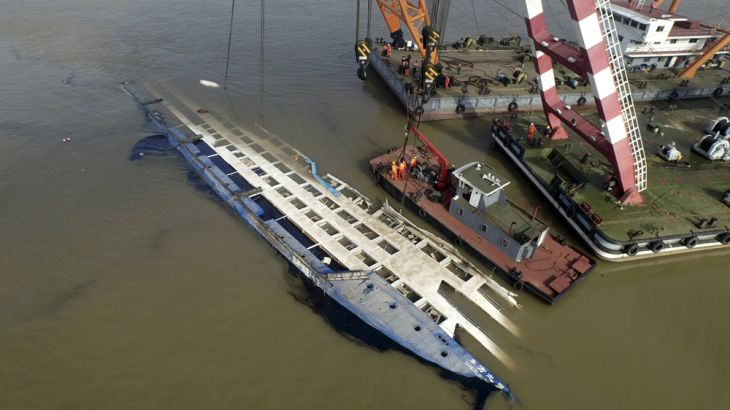
Beijing’s media damage control
How China managed the message after the Yangtze ferry disaster; plus, a look at the face behind the news, the anchorman.
A ferry capsizing on the Yangtze river in China, killing a reported 431 people, has become a case study in how Beijing manages the news media when disaster strikes.
Shortly after the news broke, journalists got their orders from Beijing, telling them not to travel to the scene, to base their coverage on official press releases and to rely on state-run news platforms for updates. The results were clear from the coverage – news outlets published the same photos, painted the same picture and stuck to the same script, reporting the story Beijing’s way.
Keep reading
list of 4 itemsNPR editor resigns after accusing US outlet of liberal bias
Lawmakers brawl as Georgian Parliament considers ‘foreign agent’ bill
Journalist loses foot after being badly wounded in Israeli attack in Gaza
But controlling information in the digital age is far from easy, even in China.
Talking us through the methods and the limitations of China’s media disaster management are: Jason Q. Ng, research fellow, The Citizen Lab; Sam Geall, editor, China Dialogue; Qiao Mu, associate professor, Beijing Foreign Studies University; and Li Hongwei, managing editor, The Global Times.
Other media stories on our radar this week: The Supreme Court in Saudi Arabia has upheld a sentence of ten years in jail, a fine of $266,000 and a thousand lashes on blogger Raif Badawi; at least four journalists have been attacked in Nigeria in the space of a week; and US-based British comedian John Oliver bought TV airtime in Trinidad to challenge former Trinidadian FIFA vice president Jack Warner on the ongoing FIFA corruption scandal.
The anchorman
In the United States, evening news anchors are an institution and they have outlasted the countless changes in the media ecosystem around them. The news networks pay them huge salaries to take on the role of being the face and brand of their journalism.
Their importance comes down to viewer ratings but in light of the scandal involving NBC’s Brian Williams’ mis-telling of an old Iraq war story, questions have been raised about the trust we invest in the anchor’s seat. The Listening Post‘s Nic Muirhead reports.
And while the anchor remains a part of the studio set-up, network bosses will agonise about who to put behind the desk. But is it really so complex? The Listening Post asked New York City-based animator Beini Huang to produce a video guide on how to create an instant news anchor just by following a few simple rules. It is as easy as one, two, three.